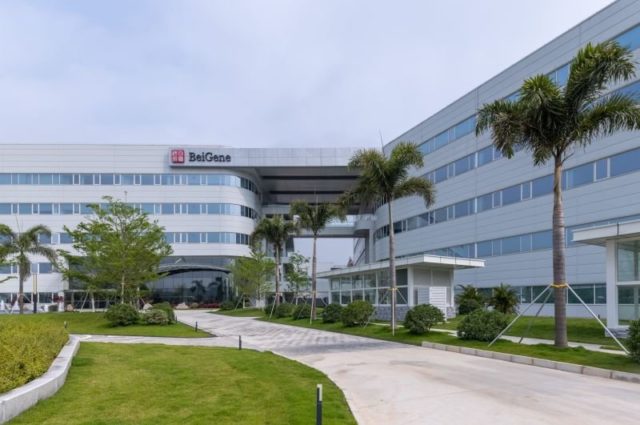
BeiGene’s PD-1 inhibitor tislelizumab has several indications under its belt in China, but its global rollout, now wrapped up in a collaboration with Novartis, has yet to kick off. But things are headed in that direction: The drug has detailed its first global pivotal trial win, teeing up a potential filing outside its home country.
Compared with commonly used chemotherapy docetaxel, tislelizumab monotherapy cut the risk of death by 36% in patients with non-small cell lung cancer (NSCLC) that had progressed on one to two lines of systemic therapy, BeiGene unveiled at the American Association for Cancer Research annual meeting.
The reduction was for all trial participants. Those on the PD-1 drug lived a median 17.2 months, versus 11.9 months for the chemo group. As expected, the drug’s effect was more pronounced in patients with high expression levels of PD-L1, as the death risk reduction amounted to 48% in that group.
BeiGene and Novartis now expect the first ex-China regulatory filings for tislelizumab to be in non-small cell lung cancer and esophageal squamous cell carcinoma before the end of 2021, a Novartis media aide said via email. An application for the second-line NSCLC use was accepted for review by Chinese authorities last month.
But an FDA green light in previously treated NSCLC may be important to tislelizumab more as a symbolic milestone than from a perspective of market opportunity in that specific indication. Currently, the standard of care for previously untreated patients is the combination of Merck & Co.’s PD-1 inhibitor Keytruda and chemotherapy. Tislelizumab’s current Rationale 303 trial excluded patients who had previously gotten PD-1/L1 cancer immunotherapies.
As Keytruda has established a strong presence in front-line use, the relevant competitor for tislelizumab in second-line NSCLC is Bristol Myers Squibb’s Opdivo. There isn’t an Opdivo study that’s equivalent to Rationale 303 for comparison, but the BMS drug’s second-line nod for squamous and nonsquamous diseases were based on the CheckMate-017 and CheckMate-057 trials, respectively, both of which pitted Opdivo against docetaxel.
In those two studies, Opdivo showed it could reduce the risk of death by 27% in previously treated patients with nonsquamous NSCLC and by 41% among second-line patients with the squamous subtype. The Opdivo trials and the tislelizumab trial can’t be directly compared, as they enrolled different populations; for example, Rationale 303 didn’t allow patients with EGFR or ALK mutations, while CheckMate-057 did. Rationale 303 also didn’t enroll any patients in the U.S.
Besides previously treated NSCLC, BeiGene recently also said a second global phase 3 trial, Rationale 302, showed tislelizumab topped chemo at helping previously treated esophageal squamous cell carcinoma patients live longer. Details from that win remain under wraps.
RELATED: BeiGene, Novartis’ PD-1 tislelizumab beats chemotherapy in esophageal cancer
An esophageal cancer OK would also set tislelizumab on a collision course with Keytruda and Opdivo, both of which are allowed in the second-line setting. Keytruda just broke into front-line treatment, and Opdivo—either in combination with chemotherapy or with BMS’ CTLA4 inhibitor Yervoy—is eyeing the same setting.
Without a clear efficacy or safety edge, Novartis and BeiGene will have a hard time stealing share from those two established PD-1 players. One front on which tislelizumab can compete with those Western-made checkpoint inhibitors? Pricing, as BeiGene management and pharma watchers have suggested.
Currently in China, tislelizumab’s annual cost for China’s national reimbursement comes at roughly CNY 74,000 ($11,300). Opdivo, without national coverage, costs roughly CNY 110,600 ($16,900) after patient assistance.






